How Green Buildings Are Shaping the Future


Going green is a popular buzzword, as many businesses are trying to make their facilities a little bit better for the environment. But making the leap to being entirely eco-friendly can be daunting. Green buildings, power and equipment don't come cheap, after all.
How are green buildings starting to shape the future? Here are five ways.
- More Businesses Want to Go Green
For a long time, going green was something a company did if it wanted to look good or appeal to a different clientele, but more and more businesses are starting to go green as a way to reduce their environmental impact rather than for the good PR that it generates.
In 2010, the number of businesses with green programs increased by 54 percent and that number is still growing. Of the companies polled, more than 90 percent of them saved money because of their environmentally friendly investment.
- Building New Instead
Right now, in the United States, less than five percent of buildings in the retail and hospitality industries are certified as green. Part of this is because many are already established in buildings that were built before green construction became a priority. In other cases, it is cheaper to tear down an old building and completely rebuild it than it is to try to make an old building greener.
But that doesn't mean cities are slacking. More than one-third of the office space in Philadelphia is certified as green, and Pittsburgh is catching up with 10 percent of their office space being similarly certified. Green buildings are becoming the thing to do in most industries, no matter where their other priorities lie.
- Energy Priorities
Lighting in businesses accounts for nearly a quarter of all business energy expenditures in the country. This is why many companies are opting for greener energy sources such as solar or wind, depending on where the business is located. Many companies are working toward a zero-net energy building, where they don't need to rely on the existing grid for power.
In 2014, a survey was able to identify more than 160 buildings that are currently zero net energy buildings, along with another 50 that were capable of being set up in this way.
- Water Is Life
Power isn't the only resource eco-friendly building owners are concerned about. Water — both potable water used indoors and recycled water used outdoors — is a dwindling resource, so buildings that can reduce their water usage can improve their environmental status.
One university hall in Reno, Nevada, was able to reduce its indoor water usage by 40 percent and their outdoor usage by 50 percent. By using things like low flow toilets and showerheads and improving their outdoor landscaping with drought-resistant and native plants, the crew was able to reduce the building’s total water usage by nearly half.
- The Future Is Existing
There are hundreds of thousands of buildings in each city that are zoned commercial, and the future of green businesses is in these existing buildings.
While in some cases it might be cheaper to destroy an old building in favor of green construction, many of the structures that aren't classified as green have been built within the last 10 to 15 years and are still in excellent shape. Converting these buildings to more green-friendly alternatives would reduce the cost of going green while still minimizing our environmental impact.
Going green isn't an option anymore — it's a necessity. Converting existing buildings to make them more environmentally friendly is one of the best and most cost-effective ways to make your building a little better for this planet that we call home.
Consumer and Financial Leaders Report Progress on Sustainability


A cut of 54 per cent in direct greenhouse gas emissions has been achieved since 2006 by the Co-op, one of the world’s largest consumer co-operatives.
The Co-op has reached its emissions goal three years early, the group announces in its 2017 sustainability report.
The emissions reductions is one of a number of proudly reported targets reached during the year.
The proportion of product packaging that is easy to recycle rose to 71 per cent, a figure the Co-op aims to increase to 80 per cent by 2020. During the year the Co-op became the only retailer to offer only British fresh meat.
On public service, the group invested £29.7m ($39.6m, €33.8m) in the communities in which it operates.
For the future, the Co-op’s objectives include understanding better the social value generated by its business, moving closer to the UN’s Sustainable Development Goals, and rallying more grassroots co-operation in the communities to campaign for change.
Similar aims and claims are made by UBS, the Swiss multinational investment bank and financial services company.
One target emphasized is to be the provider of choice for clients wishing to see financial investments supporting the UN goals and the transition to low-carbon economies.
Already by the end of last year UBS’s sustainable investments passed 1.1tn Swiss francs ($1.1tn, £828bn €944bn), representing nearly 35 per cent of the group’s total invested assets.
During the year its ethical investments in the integration category increased by 95 per cent and in third parties by 43 per cent.
The figures are given in UBS’s annual report, its annual review and its document on activities aligning with the Global Reporting Initiative, the Amsterdam-based international body that helps organizations to communicate on climate change, human rights, corruption and related issues.
Chairman Axel A. Webber and chief executive Sergio P. Ermotti (above) write in their letter to shareholders: “We are strongly committed to being – and remaining – a leader in the field of sustainability.
“Our cross-divisional organization, UBS and Society, focuses the firm on this direction. It covers our activities and capabilities related to sustainable investing and philanthropy with clients, our environmental and human rights policies governing client and supplier relationships, our environmental footprint and our community instruments.”
Flipping the switch on Blockchain-powered sustainable energy at EventHorizon 2018
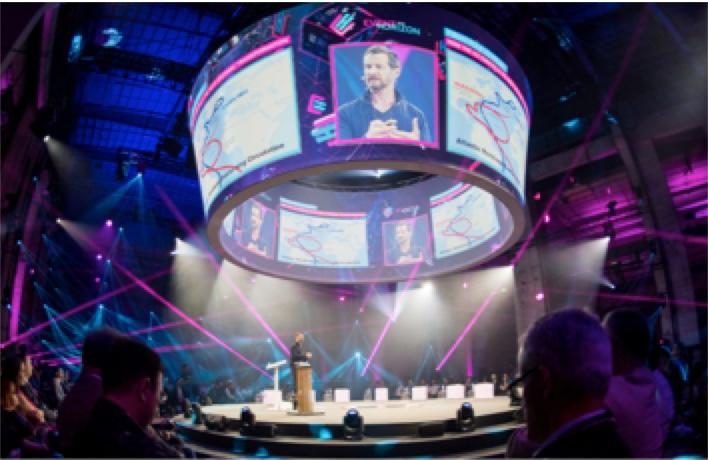
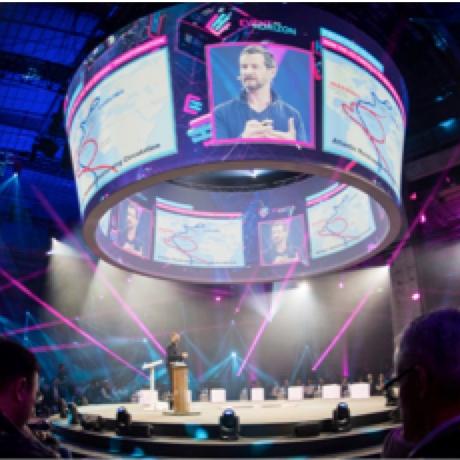
Sebastian Copeland, polar researcher and climate campaigner, speaking at EventHorizon 2018
EventHorizon, which styles itself as the ‘Global Summit on Blockchain Technology in the Energy Sector’ is the only annual event centred on Blockchain solutions for a future based solely on renewable resources. It is a platform for the development of a game-changing customer focused, fair energy future. The event brings together the Who’s Who of both the traditional energy and innovative Blockchain sectors.
The 2018 motto, "Flip the switch & turn on the power of tomorrow. Today!”, calls for a paradigm change, and took attendees on an exhilarating journey into the future of the industry. After a successful premiere in Vienna last year, more than 750 participants from 50 countries travelled to Berlin for its second edition in a reconfigured power station from Soviet-era Berlin.
Over 40 international top speakers and 40 start-ups presented their business models, innovative solutions and projects in keynotes, panel sessions, investor talks, corporate and startup pitches. This was a showcase of how governments, corporates, utility companies and innovative startups are coming together to radically change the industry and through that change how the world accesses energy, and also answer some key climate change issues.
Energy sector needs exponential change
Sebastian Copeland, polar researcher and climate campaigner, started the first day with his inspiring keynote by underlining the need for change in the energy sector. Christoph Frei, Secretary General World Energy Council, built upon that thought and emphasized, how busy energy experts are with Blockchain technology saying that “Blockchain is the number one topic that keeps 3000 energy experts from 91 countries awake at night. This technology is the key to exploiting the full potential of decentralized power supply.”
Chile opens energy data on Blockchain platform
Chile has become one of the first countries to use Blockchain technology for the energy sector. Kiumarz Goharriz Chahin, of the National Energy Commission of Chile, extolled the advantages of their initiative: “Blockchain technology is helping to increase trustworthiness in the Chilean energy sector by connecting the existing open data platform to a Blockchain network. This enables traceability, security and integrity of data. All of these will help to increase transparency and reduce information asymmetries.”
Blockchain Energy Startup Pitches
On day two, Julian Hosp, Co-Founder and President TenX, encouraged EventHorizon participants to use Blockchain technology to find innovative solutions to real world problems outside of the bitcoin hype. This demand was more than amply met by the 40 leading startups from all over the world who gave often compelling pitches for their solution. These included pioneers such as Slock.it, Electron, PowerLedgerand Riddle&Code.
Parallel to the pitches were deep dive sessions into the different challenges of implementing Blockchain technology. The second day ended with the investor talks, where Jamie Burke and others showed how investment strategies will be impacted by new technologies like Blockchain. Ramona Liberoff also highlighted the need for a paradigm shift in business models in the energy sector.
Bringing about change with Blockchains
Open discussions continued till the final day with question and answer sessions in the Tech Talks and the Security Panel. Ewald Hesse, Vice President Energy Web Foundation, emphasized the importance of energy singularity in this context. The Energy Access Panel also showed the importance of Blockchain in developing and emerging countries. The last panel, consisting of climate ambassadors such as Sebastian Copeland, Tom Dindiwood, Josh Fox and Paul Fox, discussed the thorny challenge of how change can be brought about.
Ed Hesse, initiator of EventHorizon summed up the event signified succinctly, stating: "The success of EventHorizon underlines how important Blockchain technology is for the future of the energy industry. We are all the more pleased that we were able to win such a top-class line-up of speakers, start-ups and participants for the event.”
Technology and sustainability pioneering
As exciting as the Blockchain technology being discussed at the event is, it is still largely theoretical, so the organisers didn’t just rely on the innovation being spoken about to engage the audience. In addition to the impressive setting of a cavernous old fossil fuel power station, there were many engaging, interactive, and at times spectacular, aspects to the event. Just as Blockchain itself is doing in the energy field, EventHorizon has established itself as a pioneer for both international technology and sustainability conferences.
Nations Urged to Raise Emission Targets and Policies Ahead of COP24


The Trump administration may feel the Paris Accord is a waste of time, but according to a growing number of nations and companies across the globe, member states can do even better with their carbon emission targets. Far better.
A group of some 23 nations has just signed an agreement, Declaration for Ambition, to raise climate commitments and to increase efforts to get other nations to do the same. The move is in response to a call by seven EU states to cut emissions aggressively – by 40 percent of the 1990 levels by 2030 and 80 percent by 2050.The nations, which include members of every continent but Asia agreed that the increased effort was critical to minimizing global warming.
The EU, which comprises most of the member states of the Declaration for Ambition, has also raised its target of renewable energy to 32 percent from 27 percent, which critics said didn't go far enough.
The increased commitment comes as businesses and one indigenous community in Sweden step up their call for changes to how nation states are addressing climate change.
In the polar region of Lapland, Sweden, the historic community of Sami has launched a lawsuit against the European Union for failing to address climate change. The Sami, reportedly Europe's only indigenous people, rely on the arctic environment for their livelihood. Warming temperatures in Santa Claus' official homeland has made it increasingly difficult for the Sami to maintain their cultural way of life, which has historically relied on reindeer herding.
"If we lose the raindeers, the Sami culture will be lost," one indigenous member told The Guardian newspaper.And they aren't the only people speaking out. The litigants have been joined by farmers in France, Portugal, Kenya, Germany and other countries who say that governments need to work more aggressively to reduce carbon emissions. The Sami have gone on record to oppose some of the methods that Sweden and adjacent Norway are using to create clean energy, which is to erect windmills on indigenous lands used for herding.
The plaintiffs aren't suing for money. They just want the EU to take a stronger stand on carbon emissions.
Businesses aligned with the We Mean Business movement have also been increasing their call for science-based emission targets. According to the nonprofit organization more than 420 companies have recently committed to science-based targets as a measure of support to COP24 progress. They include 11 new commitments from subsidiaries of the Mahindra Group in India. Christchurch Airport in New Zealand and the BSES Yamuna Power Plant in India have also announced steps to cut carbon emissions from their transportation fleet. But as the nonprofit Climate Action Network points out, meeting new targets won't be easy. It will still demand increased vigilance from nations around the world. "Countries now need to walk the talk," the organization wrote in its letter to the UN Framework Convention on Climate Change. "The International Panel on Climate Change (IPCC) Special Report on 1.5 degrees C, due to be released in October, is likely to confirm that limiting warming to 1.5 degrees C is feasible, but [is] hard to achieve." Whether it is or not, the UN Climate Change Conference this December, which meets in Katowice, Poland and is likely to be a watershed moment for climate action. And organizations like We Mean Business and the backers of the upcoming Global Climate Summit in San Francisco have noted, it's the businesses and communities that stand to lose the most from global warming, and seem to have an eye squarely on what it will really take to slow climate change. Flickr image: Mats AnderssonCreating Value Through Values: CDL Builds Sustainably
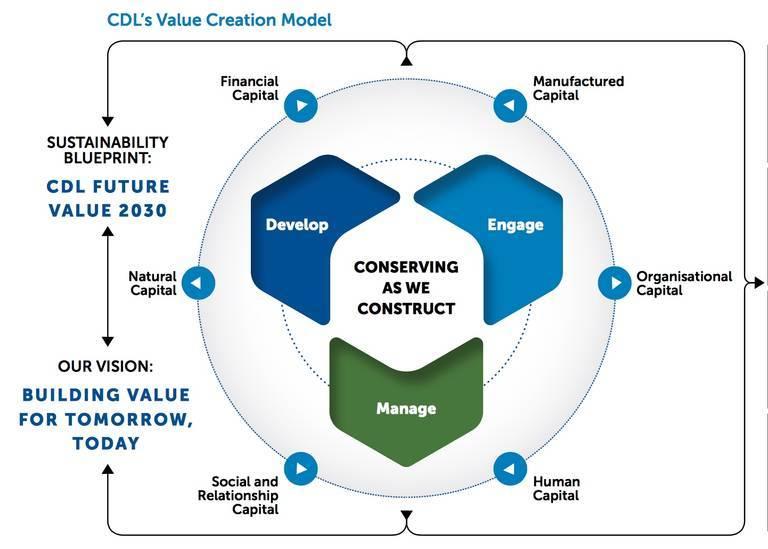

Energy use has been cut by 27.3 per cent in 10 years by CDL, the global Singapore real estate company.
The group, which has a presence in 26 countries, reports it has hit its 2030 target of a 25 per cent reduction 12 years ahead of time.
The reduction is one of a list of achievements in CDL’s 2018 integrated sustainability report. To fill out its claim, the company reports that energy efficiency and other measures cut electricity bills by more than S$20m ($15m, £11m, €12.5m) between 2012 and last year at eight of its managed commercial buildings.
During the same period, CDL’s overall carbon dioxide emissions fell by 32.8 per cent putting the company well on track to meet its 2030 target of 38 per cent.
More progress is flagged up for the Green Mark certification awarded for premises by the Building and Construction Authority of Singapore. Altogether 75 per cent of CDL buildings now carry the mark, placing the company ahead of the game to reach its 2030 target of 80 per cent.
In the past year the group has expanded its stakeholder involvement by issuing Singapore’s first Green Bond and raising S$100m for its green building efforts.
With its 2018 report, CDL has become one of the first Singapore companies to publish voluntarily its disclosures in the key areas of governance, strategy, risk management, metrics and targets, as recommended by the Task Force on Climate-related Disclosures, the advisory body set up by the G20.
It intends this year to complete a study assessing climate risks and opportunities in its main operations as an aid to managing the financial impacts of its climate policy.
A comprehensive study has been conducted to reassess the environmental, social and governance issues in the report. CDL listened to 160 stakeholders and an expert panel of senior representatives from international ethical organizations.
Sherman Kwek, the CDL group chief executive, said: “Sustainability is fast becoming the norm throughout the business ecosystem. From a very early stage, CDL has recognized the importance of ESG integration. For more than two decades, we have incorporated sustainability into our business and operations to future-proof our business and unlock value.
“More than just a developer of living and working spaces, we have striven to be a builder of lives and communities. Our long-standing commitment to innovation and green building has distinguished CDL as a trusted eco-developer and differentiated our products.”
Illustration: CDL
Oxfam Spurs Transparency Conversation Between Consumers and Supermarkets

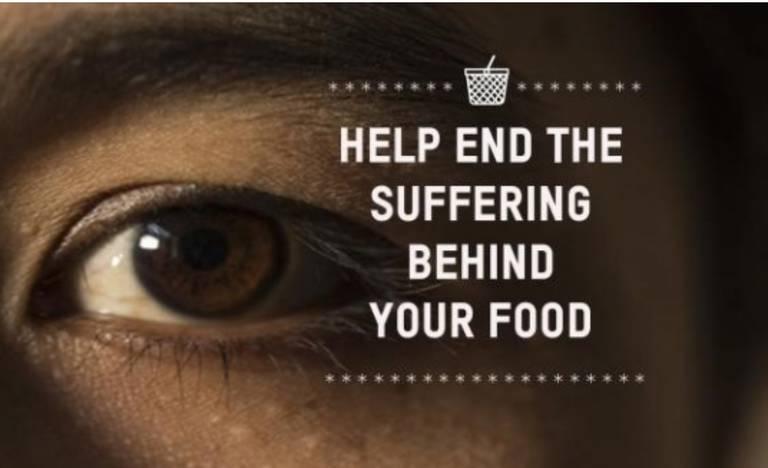
By Cone Communications
Americans have seen the power of their activism make a change. From boycott hashtags, student protests and outspoken employees, consumers have been a driving force for progress on social and environmental issues. But they are not always equipped to start a direct dialogue with brands about complex issues. Oxfam recognized that issue and is arming consumers with facts to help facilitate a conversation with supermarkets around the world.
Oxfam, a global NGO dedicated to ending the injustice of poverty, recently launched the Behind the Barcodes campaign focused on the issue of human suffering within food supply chains. As part of the campaign, Oxfam reviewed the public policies, statements and commitments of 16 major supermarkets to create a “Supermarket Scorecard” that grades stores on their transparency and accountability around treatment of workers, farmers and women – generating an overall score that consumers can quickly look-up on the campaign website. Oxfam hopes the scorecard will encourage companies to share more information regarding their supply chains with customers, suppliers, workers and governments, which would spur honest and more effective conversations with those stakeholders around the solutions to the issue. Consumers curious about the score of their supermarket can find the scorecard on a webpage dedicated to the campaign. In addition to learning their supermarket score, visitors are encouraged to “write a personal message to [their] supermarket to ask them to help end the human suffering behind the food they sell” and are provided with a letter writing guide. To make the process even easier, the webpage also includes a form where consumers can give their supermarket feedback regarding its score and ask about specific policies it is putting into action to make improvements.
Eighty-five percent of consumers want companies to tell them what they’re doing to operate more responsibly. However, supply chain transparency is a complex issue that many consumers are ill prepared to engage in. Oxfam took the extra step, not only providing consumers with streamlined information to raise awareness, but also creating a platform that allowed shoppers to join the conversation and close the gap between them and their supermarket.
Illustration: Cone Communications
New Rules Posted for Financial Transparency in the 14 British Overseas Territories
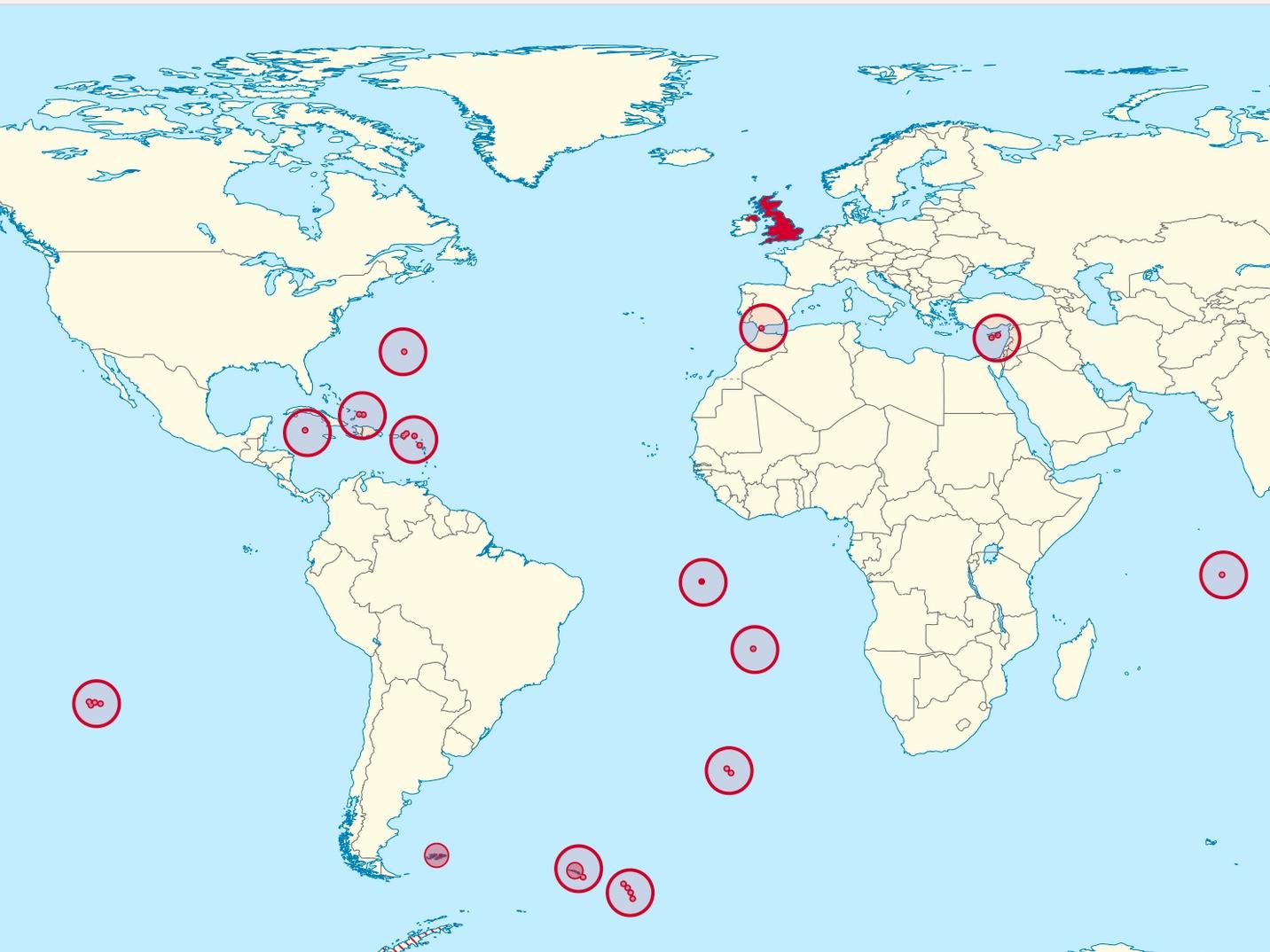

Public registers naming the owners of companies in the 14 British Overseas Territories will have to be produced by 2020.
The UK government has made the ruling to stop the laundering of dirty money in the territories, which are nations, including the British Virgin Islands and the Cayman Islands, outside the UK but falling within its jurisdiction and sovereignty.
If any territory fails to bring in the measure the UK will impose its ruling.
Transparency International, the Berlin-based campaigning NGO, has called the decision “a major victory in the fight against cross-border corruption”.
Research by Transparency’s UK Office in 2015 showed that shell companies registered in secrecy jurisdictions – a name often given to overseas territories – were involved in more than three quarters of property corruption cases investigated by the Metropolitan Police in London.
Nearly 80 per cent were registered in the British Overseas Territories, or in Crown Dependencies, self-governing British possessions comprising Jersey, Guernsey and the Isle of Man, for which the UK is responsible.
The number of businesses and individuals involved is a minute proportion as most companies conduct their affairs by the rules, certainly in the UK, but a fortune in illicit money has nevertheless flowed into shell companies in the Overseas Territories.
Transparency’s London office observed last year that suspicious sources in overseas havens, nearly half based in the British Virgin Islands, supplied £4.4bn ($5.84bn, €5bn) to buy UK property.
A BBC programme revealed that a Ukrainian gang bought eight high-end London properties using companies in the British Virgin Islands. The BBC conducted an investigation with Transparency and the Organized Crime and Corruption Reporting Project, a consortium of investigative centers, media and journalists in Eastern Europe, the Caucasus, central Asia and Central America.
Russia, too, was said to be implicated in the corruption. The London non-profit Global Witness, which campaigns against corruption and the exploitation of natural resources, estimates that Russian companies channeled £68bn through the British Overseas Territories between 2007 and 2016.
Some of the British Overseas Territories questioned the UK’s competence to impose disclosure. Orlando Smith, Prime Minister of the British Virgin Islands, complained: “It … calls into question our very relationship with the UK and the constitutional rights of [our] people.”
Aid charities, by contrast, welcomed the intervention. Jon Date, ActionAid UK’s senior advocacy manager, said: “These measures will help flush out the corruption and tax evasion the keeps the most vulnerable people in the world, including women and girls, locked in poverty.
“Ministers will ensure that Britain will lead, not follow, when it comes to UK-linked tax havens.”
Margaret Hodge, one of the UK MPs behind the ruling, said: “I can’t think of another issue which is more moral than trying to intervene to prevent the traffic in corrupt money and illicit finance across the world.”
The ruling excludes the Crown Dependencies because the UK Parliament lacks the authority to impose its will on them.
However, Andrew Mitchell, another UK MP who asked for the ruling, expected the government “to make the point persuasively that we hope that the Crown Dependencies embrace the same ethical position and equal transparency”.
Moving Beyond Pride Month: How Brands Can Authentically Celebrate & Support The LGBTQ+ Community Year-Round


By Devika Narayan
June is a meaningful time for the LGBTQ+ community. What started as a day to honor a significant catalyst for the gay rights movement — the 1969 Stonewall Riots — has expanded to a whole month of reflection, education and celebration. With rainbow-adorned cities around the world hosting a number of events and parades to celebrate the community, Pride Month is an important moment in time to recognize progress made and acknowledge work that still needs to be done. And, with nearly two-thirds of consumers wanting to see companies address LGBTQ+ rights, more brands are looking to Pride Month as a way to join in the conversation and demonstrate support for LGBTQ+ causes in a more visible way.
While it is encouraging to see more companies like Sam Adams, Disney and Madewell raising money for the community by releasing limited edition Pride-themed merchandise, brands that truly stand out as allies are making authentic commitments that have the power to enact meaningful change year-round. Here are a few takeaways from companies that are taking their support to the next level:
- Promote Inclusivity through Holistic Engagement: The online gaming community has a long-standing reputation for not being inclusive. Last year, Amazon’s gaming platform Twitch sought to combat this stereotype with the launch of #TwitchUnity. This year, the extensive campaign continued promoting unity and diversity by prominently highlighting members of the LGBTQ+ community on its website, raising money for LGBTQ+ causes and creating permanent emotes for its chat function inspired by the gay, bisexual, transgender and lesbian flags. Additionally, Twitch teamed up with the It Gets Better Project to empower employees to share their support and encouragement for LGBTQ+ youth all around the world. Twitch’s ongoing efforts— both inside and outside company walls — is a first step to authentically enacting meaningful change in the industry.
- Amplify Marginalized Voices: Companies seeking to empower LGBTQ+ employees and consumers during Pride Month need to remember that it is not about them. Being an ally is about listening and shining a spotlight on historically-marginalized voices — which is exactly what Spotify aims to do with its Pride Hub. Launched last year, the company uses the Hub to curate playlists featuring LGBTQ+ artists around the world and help listeners easily find examples of queer culture. In an effort to keep the conversation going this year, Spotify invited the cast of Netflix’s hit show Queer Eye to participate in a Pride Hub takeover to showcase the music that most inspires and empowers them to proudly live at full volume. Initiatives like these are important, as they demonstrate how brands can use their privilege and influence to elevate the experiences, narratives and messages of those who are not in the same position to do so.
- Put Your Dollars Where It Counts: Representation matters — and while many brands feature LGBTQ+-themed campaigns for Pride Month, more companies are now investing marketing dollars in celebrating diverse communities year-round. Acne Studios’ 2017 fall/winter campaign celebrated gay black dads by finding talent through a social media post that went viral. Dove unveiled a 2017 campaign to showcase “Real Moms,” featuring a transgender mom and her family. Companies who are true advocates should be adamant about factoring LBGTQ+ influencers into their budgets and campaigns throughout the year to help the community attain more visibility in mainstream media.
Pride Month offers a space in which everyone is welcome — including brands. Companies can and should take part in the celebration, but only if done so thoughtfully. By moving away from moment-in-time actions to sustained, year-long commitments and advocacy, companies can rise up and make meaningful impacts that bring us one step closer to realizing equality for all.
Devika Narayan is Account Supervisor, Cone Communications
Originally published by Cone Communications and distributed by 3BL Media.
Gucci Broadens Its Sustainability Efforts with New Online Portal


Gucci has a new look these days. Italy’s fourth-most famous fashion brand is marketing sustainability, working to enhance its eco-conscious strategies. The 98-year-old couturier says it has been quietly working on its new approach for years, giving thought to just what it would take to “connect people planet and purpose” under Gucci’s brand.
The answer, the company says, is Equilibrium, a platform that offers curated content and a glimpse into Gucci's goals, manufacturing processes and current projects.
"The launch of the website Gucci Equilibrium is part of a 10-year plan to embed a comprehensive sustainability strategy into and around Gucci," the company says on its website, "governed by a Culture of Purpose, the House’s mission to bring positive change to secure our collective future. Consumers can connect with the platform to learn more about Gucci's sustainability initiatives. "Gucci Equilibrium is about us spreading that energy and that positive intent to everyone who loves our brand,” Marco Bizzarri, Gucci president and CEO said. “These are critical times when we can all play our part in helping to deliver on the UN Global Goals and the Paris Climate Agreement. The only way to do that is by bringing people together, sharing ideas, innovation and experiences. This is the objective we have set for Gucci Equilibrium.” The portal provides stories and science between environmental initiatives and how they impact the fashion industry. Readers can learn about the company's environmental journey and the efforts that its parent company, Kering, has initiated to ensure raw materials meet its sustainability standards. They can also explore the various initiatives it undertakes to put people, as well as the planet at the center of its business operations. According to Gucci, it both partners with organizations that shares its values and is developing a supply chain that meets its environmental sourcing criteria. The initiatives that it and Kering have underwritten also provide a glimpse into their values. Women in Motion, an effort by Kering to showcase the many roles that women have played in the entertainment industry "whether in front of the camera or behind it" and Gucci's support of the Beygood/UNICEF initiative to supply water to impoverished children at the heart of Africa tell their own stories about Gucci and Kering's broader view of humanitarianism. Readers can connect with Equilibrium by logging on to its independent site. Flickr image: Michael CostaSDG Reporting Webinar


Have you had a chance to sign up for Ethical Corporation’s exclusive webinar on Reporting on the Sustainable Development Goals?
If not, then join Tetra Pak, PPGM, Coca-Cola Hellenic Bottling Company and WBCSD for an exclusive 1 hour webinar [Thursday, 12th July, 2pm BST] or receive the recording if you can’t join here:
Speakers include:
- Mario Abreu, Vice President Environment, Tetra Pak
- Piet Klop, Senior Advisor Responsible Investment, PGGM
- Michael Dickstein, Group Sustainability Director, Coca-Cola Hellenic Bottling Company
- James Gomme, Director, Sustainable Development Goals, WBCSD
Learnings include:
- Identify what is relevant for SDG reporting
- Map against your operations on a local, national and regional level
- Measure your impacts against the SDGs
- Properly communicate your impacts against the SDGs
Can’t join? Sign up anyway to receive the full post-webinar recordings: https://attendee.gotowebinar.com/register/3224734954935976193?source=raweb
Media Contact:
Ed Long
Project Director
Ethical Corporation
+44 (0) 207 375 7188